Pasca cu Branza is a traditional Easter dessert that is specific to the north-eastern part of the country (in Moldavia). It can be simple, with jagged margins, or it can have dough braided edges. Sometimes a cross-shaped braid is placed in the middle, representing the crucifixion of Jesus. People usually take some Pasca, dyed eggs and cooked lamb to the church, where the food is sanctified by the priests. On the Easter day everyone eats some sanctified food before serving any of the other dishes.
I must say that I’m a bit newbie at this since it’s my first time baking Pasca. I used to live in the southern part of the country where Pasca is not as famous but, where there is no Easter without the Sweet Bread ‘Cozonac’ 
Time: 165 min, Prep: 120 min. Cook: 45min.
Servings: 20-24
Ingredients:
For sweet bread dough:
- 250 ml milk
- 500 g white flour
- 150 g sugar
- 3 tsp active dry yeast
- 3 eggs
- ½ tsp salt
- 100 ml oil
- Zest from 1 lemon
- 2 Tbsp rum extract
- 2 pouches vanilla sugar
- 1 beaten egg for brushing the top
For filling:
- 600 g cottage cheese or a mix of 350 g bakers light cream cheese (I bought this from Starsky) & 250 g feta cheese
- 5 eggs
- 100 g sour cream
- 100 g raisins
- 200 g sugar
- Zest from 1 lemon
- Zest from 1 orange
- 3 Tbsp rum extract
- 2 Tbsp semolina
- 100 g butter
You also need a pan that is 29cm (11.5 inch) in diameter.
Directions:
In a small bowl, combine the dry yeast with 1 tablespoon of sugar and ¼ of the lukewarm milk. Mix for 1 minute to dissolve the yeast and let it rest for 5-7 minutes.
In a large bowl place the white flour and make a hole in the centre. Sprinkle the salt and pour yeast and the milk mixture over flour.
Add the eggs, remaining sugar & milk, lemon zest, rum extract and vanilla sugar.
Mix to incorporate all ingredients with a spoon. Add the oil a little at a time and knead with your hands for about 15 minutes, until dough will not stick (too much) to your hands.
Cover with a clean towel and place in a warm spot. Allow dough to rise until double in size.
In the meantime, let’s prepare the filling.
Mix the cream cheese and feta cheese.
Add eggs, the sugar, lemon & orange zest, rum extract, sour cream and melted butter (but at room temperature). Mix thoroughly until all ingredients are combined. Lastly, mix in the semolina and raisins.
And back to the dough… cut the dough into two equal parts, sprinkle some flour on your work surface and roll one part of the dough. Place the sheet in the pan.
Divide the other half of the dough into 3 equal parts.
To make the strands of dough, roll up each part into logs on a floured surface. Begin in the center and while rolling the dough, move your hands outward along the length of the dough in order to gently stretch the dough to the desired length. Make sure that all 3 strands of dough are about the same diameter and length. Now you are ready to braid the strands!
Lift the first strand over the middle strand, the third strand over the first strand, and the middle strand over the third strand. Repeat these steps until your braided rope is done. That was easy, right :)!
Seal both ends of the dough and arrange the braided rope in a ring on top of the sheet of dough from the pan.
Let it rise in a warm spot for 15-20 minutes (I missed this step so the braiding didn’t look as nice after I baked the cake; my cheese mixture almost covered the edges and then the dough braid raised during baking & mixed with the cheese). Then add the cheese mixture in the middle.
Lastly brush the braided rope with the beaten egg.
Bake for 45 minutes in the preheat oven.
Enjoy!






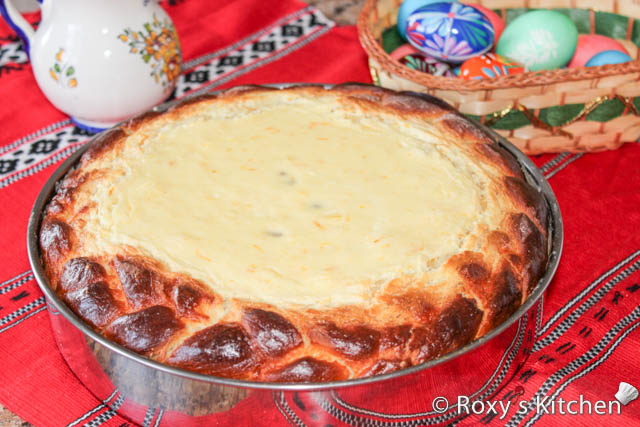
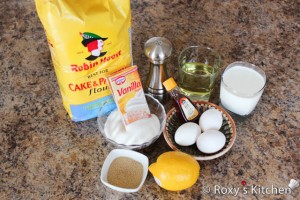
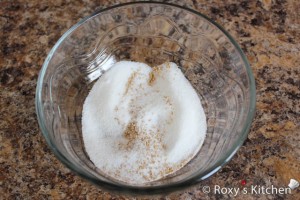
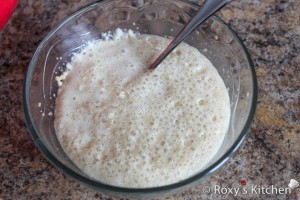
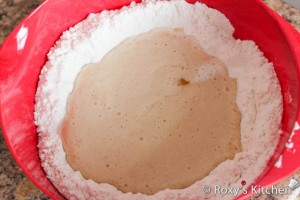
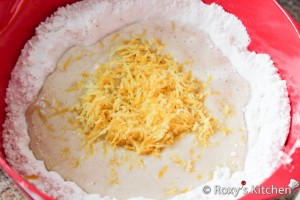
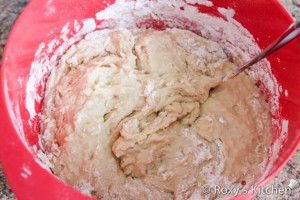
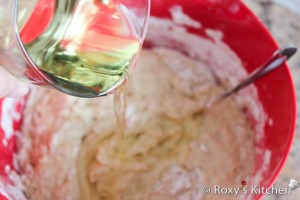
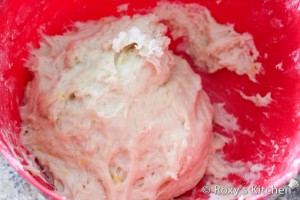
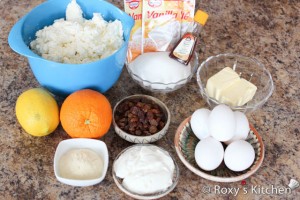
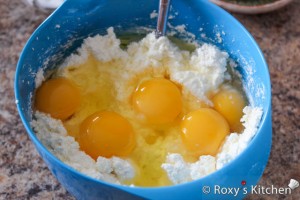
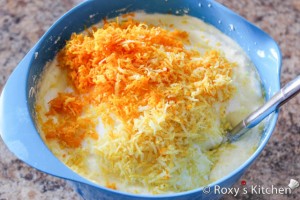
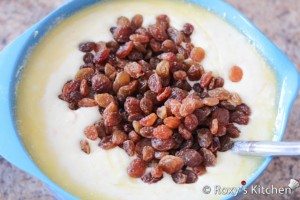
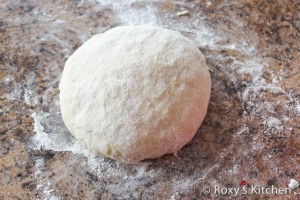
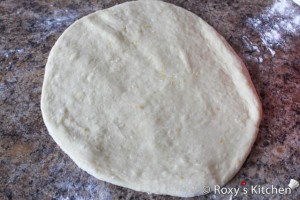
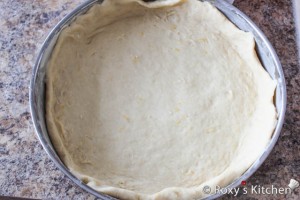
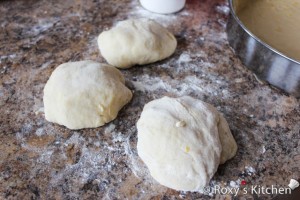
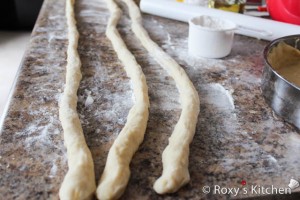
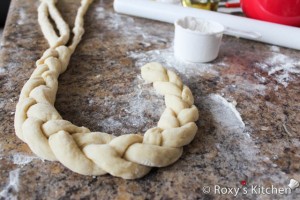
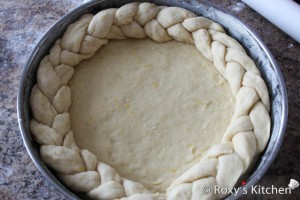
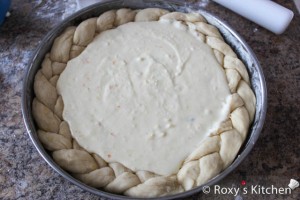









Omg, it looks amazing. I like that it has a lot of cheese in the middle, unlike the other recipes that I’ve seen:P. I’m gonna bake it, although we don’t bake Pască cu brânză in Poland. We have different traditional Easter foods, but this Romanian invention is spectacular:),